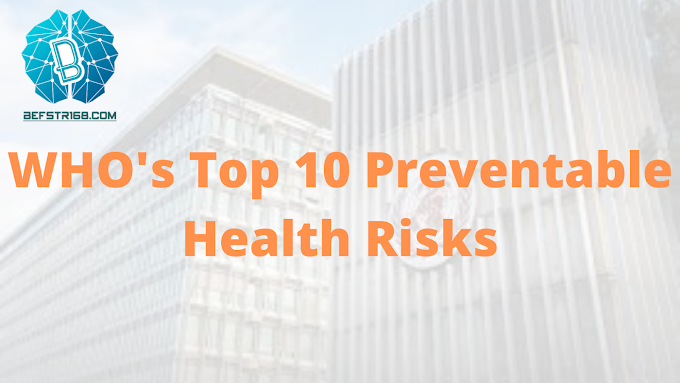The health
department defines epidemiology as the study of factors that affect patterns
and distributions of diseases. Health Departments have a main role in the
prevention and control of epidemic diseases, injuries, occupational hazards and
other health-related matters.
An Introduction to Epidemiology
Epidemiology is the study of how diseases spread and how they can be controlled. It is a vital tool in public health, as it can help us to understand the patterns of disease and identify ways to prevent them. Epidemiology is a branch of medicine that deals with the incidence, distribution, and control of diseases in populations. It is concerned with all aspects of disease, from the initial infection to the final outcome. The term epidemiology comes from the Greek words επί (epi) meaning “on” or “upon”, and δημός (demos) meaning “people”. So, literally, epidemiology is the study of “upon the people”. In practical terms, epidemiology is the study of how often diseases occur in different groups of people and why. It is used to find out who is most likely to get a disease and how best to prevent it. Epidemiological studies can be observational or experimental. Observational studies involve observing and recording data, without intervening. Experimental studies involve deliberately manipulating a variable to see what effect it has on another variable.
Understanding Disease
Epidemiology is the study of how diseases spread and how they are controlled. It is a vital tool in the fight against disease, and the Health Department's Epidemiology Unit is at the forefront of that fight. The Epidemiology Unit is responsible for investigating outbreaks of disease, tracking the spread of diseases, and developing strategies to control them. They also work to develop new vaccines and treatments for diseases. The unit is made up of a team of highly trained professionals who use their expertise to protect the public from disease. They work tirelessly to keep us healthy, and we are grateful for their efforts. Epidemiology is the study of how diseases spread and how they are controlled. It is a vital tool in the fight against disease, and it can help us understand how to keep ourselves and our families safe. Epidemiology can help us understand the patterns of disease transmission, and this knowledge can be used to develop strategies to prevent or control the spread of disease. For example, epidemiological studies have shown that certain groups of people are at higher risk for certain diseases, such as HIV/AIDS or tuberculosis. Knowing this information can help health officials target prevention and treatment efforts where they are most needed. Epidemiology is also important for tracking the progress of diseases and monitoring the effectiveness of control measures. For example, epidemiological data was used to track the spread of SARS-CoV-2, the virus that causes COVID-19, and to assess the effectiveness of measures taken to control its spread. If you want to learn more about epidemiology and how it can help keep you and your family safe, there are many great resources available online. The Centers for Disease Control and Prevention (CDC) has a lot of information on their website, including educational materials for children. The World Health Organization (
The Causes of a Disease
There are many different factors that can cause a disease. Infectious agents, such as viruses and bacteria, can cause disease. So can non-infectious agents, such as toxins and physical agents. The way in which a person is exposed to a disease-causing agent also affects whether or not they will develop the disease. For example, if someone swallows a virus, they are more likely to develop the disease than if they were simply exposed to the virus through the air. Once a person is infected with a disease-causing agent, their body’s immune system plays a role in whether or not they will develop the disease. If the immune system is unable to fight off the infection, the person will become sick. There are also many different environmental factors that can affect whether or not a person develops a disease. For example, exposure to sunlight can help protect against certain infections. Poor nutrition can weaken the immune system and make people more susceptible to diseases. And living in crowded conditions can increase the spread of infectious diseases.
The Different Levels of Prevention
The Centers for Disease Control and Prevention (CDC) defines epidemiology as “the study of the distribution and determinants of health-related states or events (including disease, injury, and disability) in defined populations, and the application of this study to the control of health problems.” In other words, epidemiologists study patterns of illness and injury in groups of people. There are three different levels of prevention that can be used to reduce the burden of disease in a population: primary prevention, secondary prevention, and tertiary prevention. Primary prevention measures are those that aim to prevent illness or injury before it ever occurs. This can be done through public health measures like vaccination programs or by increasing access to healthy food and safe drinking water. It can also be done through individual lifestyle choices like exercising regularly or not smoking. Secondary prevention measures are those that aim to detecting and treat a disease or condition early, before it becomes more serious. This can be done through screening programs like mammograms or colonoscopies. It can also be done through early treatment of diseases like hypertension or diabetes. Tertiary prevention measures are those that aim to reduce the severity of a disease or condition that has
The Conclusion
We have come to the end of our exploration of epidemiology. We have seen how epidemiology is the study of the distribution and determinants of health-related states or events (including disease), and how it can be used to improve our understanding of health and disease. We have also seen how epidemiological methods can be used to answer important public health questions. While epidemiology is a complex science, we hope that this introduction has given you a better understanding of what it is and how it can be used to improve our health. If you would like to learn more about epidemiology, we encourage you to explore the resources listed in the Further Reading section below.






.png)

Great
ReplyDeleteExceptional
ReplyDelete